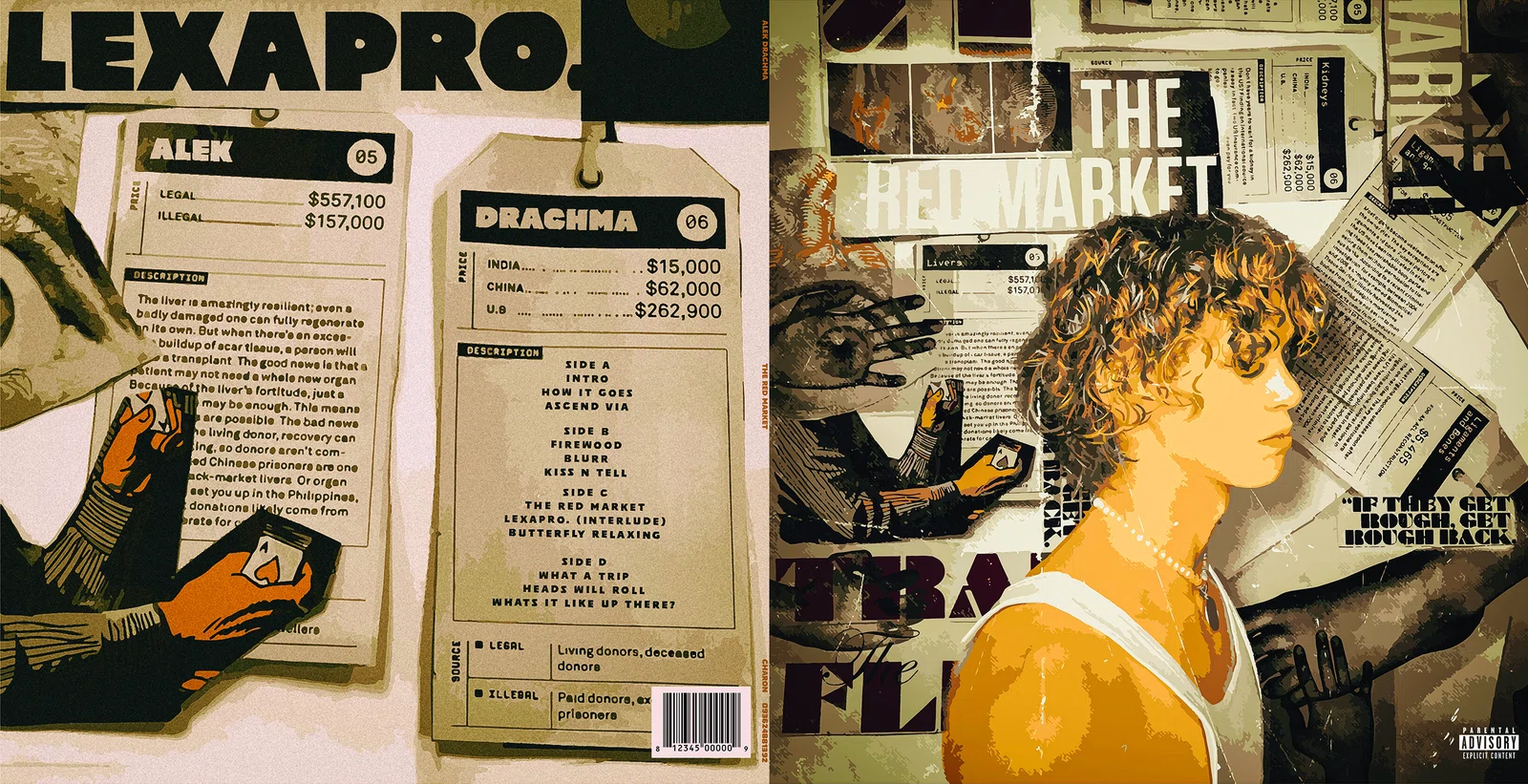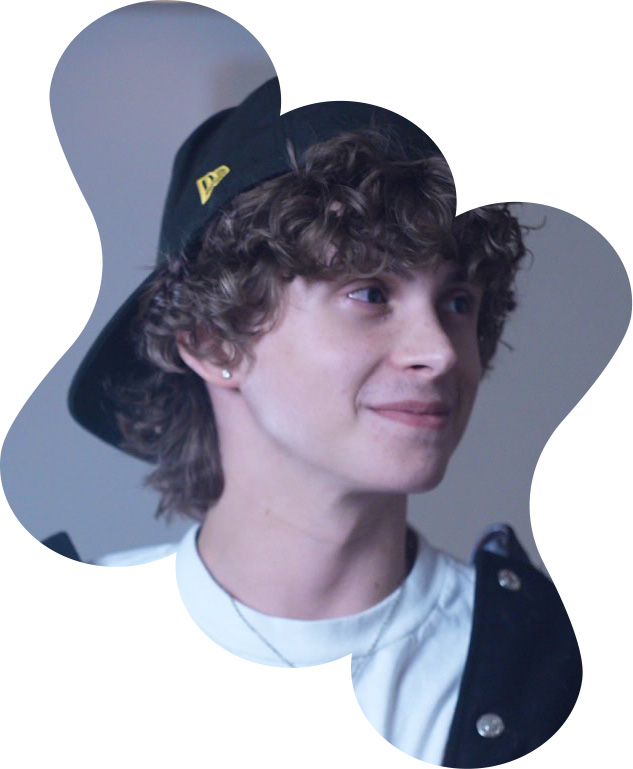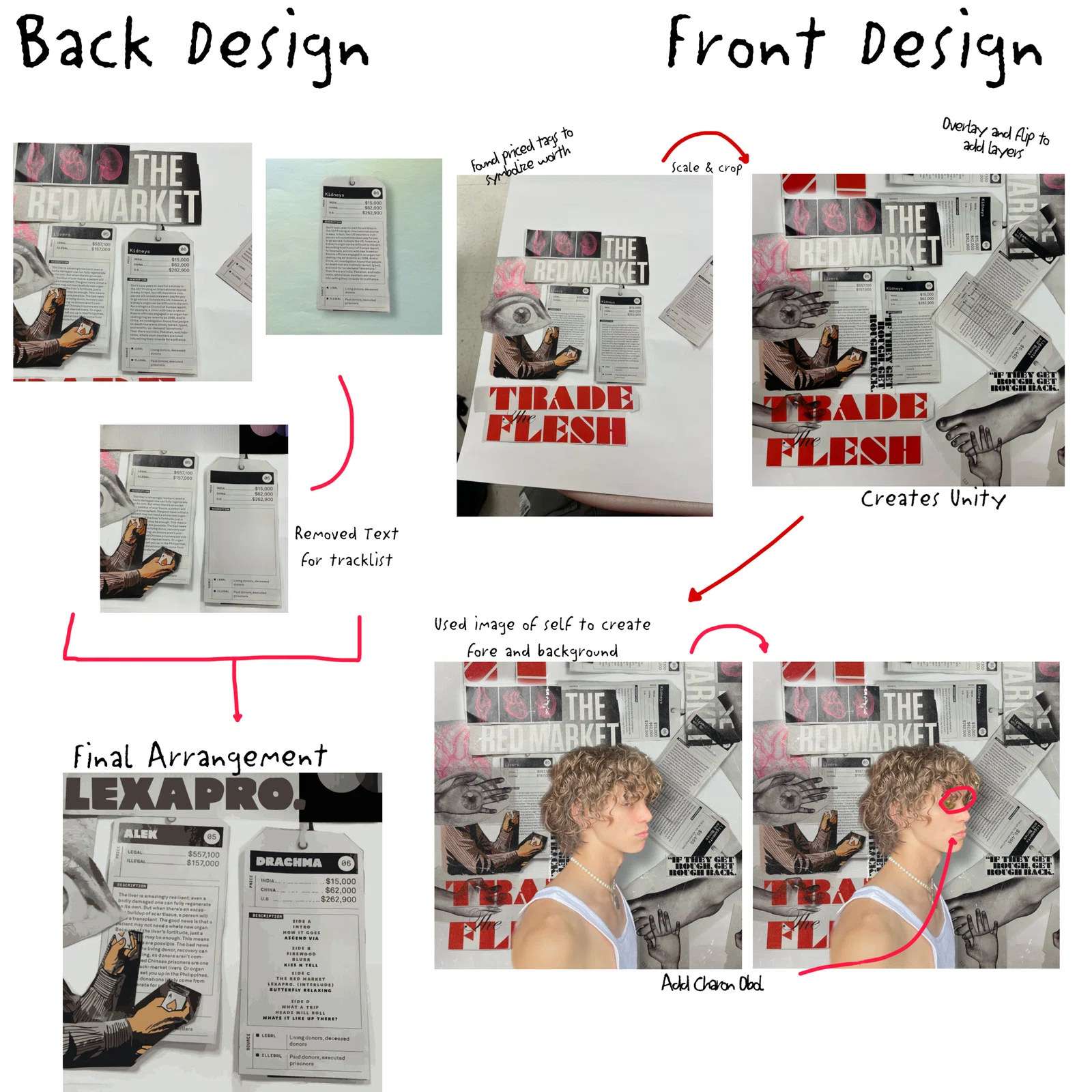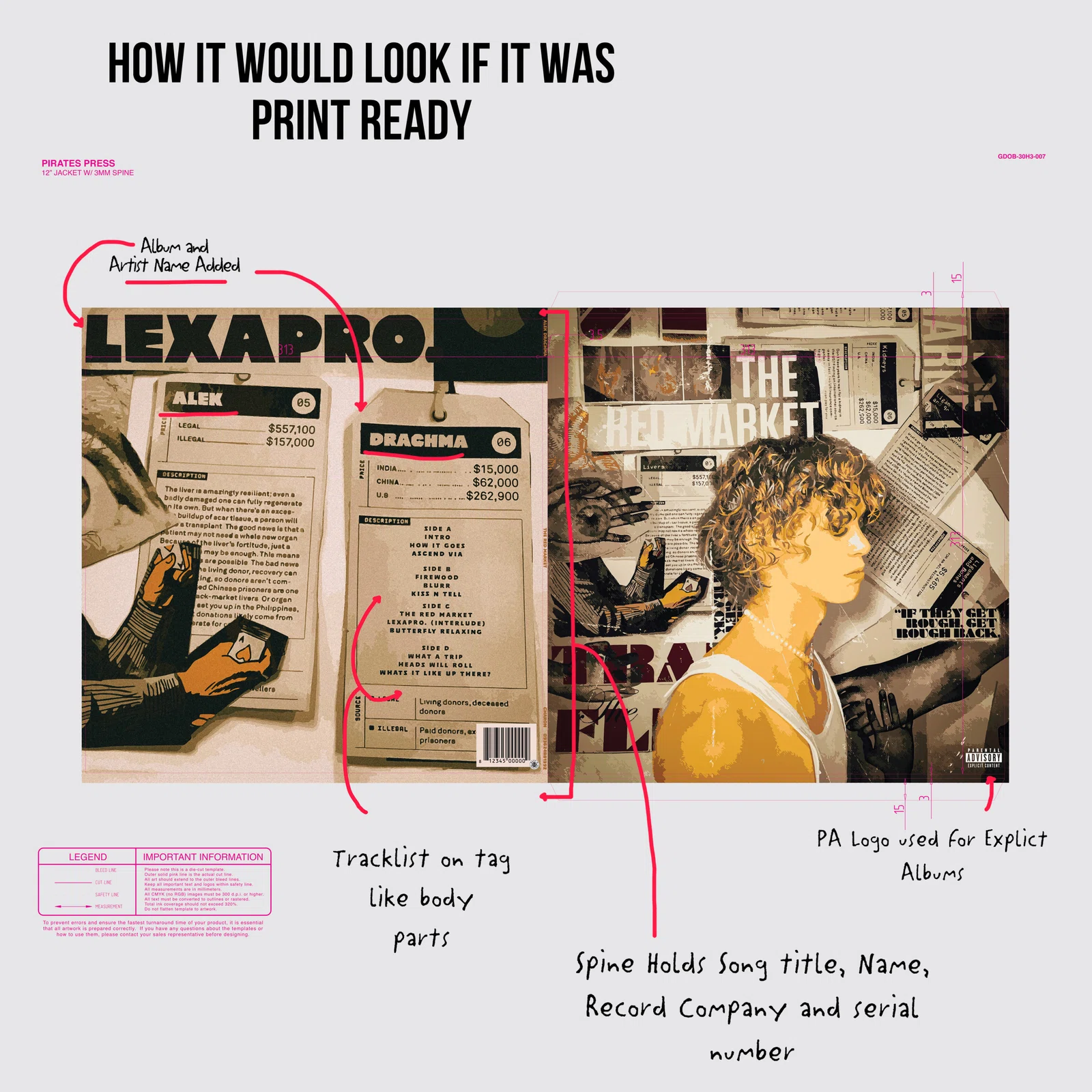

The Red Market

Height: 12” x Width: 24” | Idea(s) We don't choose to be born, or choose the body we have. So make use of the cards you are dealt | Material(s): National Geographic Magazine, iphone 15, Photoshop, Illustrator, Lightroom | Process(es): World where you build your body, body parts have price tags, wanted to seem busy but have balance
Citation(s): National Geographic Magazine, Public Use PA logo, bar code from album I own (mock-up format) | Curatorial Note: Well crafted collage design using digital tolls to arrange and unify it. We really appreciated seeing the thought process, notes and planning in the thumbnails.
Alec Rogers
Student statement
Student statement


AP 2-D
Winston Churchill High School
Potomac, MD, USA
Does your work reference or draw on a contemporary or historical artmaking style, practice, or tradition? If so, please explain.
National Geographic Magazine, Public Use PA logo, bar code from album I own
(mock-up format)
What did you do to improve your 2-D, 3-D, or Drawing portfolio skills?
To improve my 2-D portfolio skills, I committed to pushing my creative and mental limits during my senior year. Initially, I experimented with different designs, styles, and ideas, even though it was a frustrating process that left me with no finished work for the first half of the year. Instead of giving up, I reflected on a successful piece I had created the year before, which used a combination of styles and techniques. Building on that foundation, I refined my approach by applying similar methods to new ideas in my portfolio. This process not only helped me develop a unique artistic style but also boosted my confidence in my abilities. By dedicating myself fully to experimentation and perseverance, I created work that I’m truly proud of, marking significant growth in my skills and artistic expression.

Material(s): Adobe Illustrator, National Geographic images, paper, iphone 15 camera, Pics Art, scissors | Process(es): Collaged body parts show we don't choose the body we have, so make use of the cards you are dealt | Citation(s): National Geographic Magazines

In this investigation I composed a track list for a hypothetical album of mine called Lexapro, based on songs I have recorded. The album deals with exploration of the mind, one's existence, and rebirth. With each work I conveyed the message of the songs through collages and drawings.
In what ways did your artmaking confidence increase in AP Art and Design?
When I first began my AP portfolio journey, I hadn’t found much success with my graphic design work. I had spent countless hours on various projects throughout high school, but I never truly gave any of them my all—a fact I’m not proud to admit. However, as I approached my senior year, I made a promise to myself: I would push my creative and mental limits like never before. For the first few months, I explored different designs, styles, and ideas for my portfolio. It was a challenging and, at times, heartbreaking experience. By the time I finished "experimenting," half the school year had flown by, and I had nothing to show for it. A part of me wanted to give up—that’s what I had always done in the past—but I decided to go back to the drawing board. A year before starting my portfolio, I had created a beautiful piece that combined different styles and techniques. Inspired by that success, I tried to recapture its magic, applying similar approaches to my new ideas. This time, it worked beautifully. Now, I feel incredibly confident in my artistic abilities and have developed a style I’m genuinely proud of. Looking back, I’m so happy and proud of the work I created during the 2023–2024 school year.
How did you modify or revise your artmaking direction based on feedback?
Originally, I used painting styles to convey my music but realized this did not represent my use of sampling. I chose collages because they are a metaphor for a song using samples. I also explored typography in the album covers. Experiments with fonts, placements, and sizes allowed me to fully encapsulate my message within the 12x24 album cover. My own writing samples were incorporated. As my sustained investigation went on, my ability to show balance and form through typography flourished. In works 1,4, and 5, I used different magazine ads from the '70s to convey messages of success, self reinvention, and damnation.
Material(s): Adobe Illustrator, National Geographic images, paper, iphone 15 camera, Pics Art, scissors | Process(es): Added text layers, bar code, & PA warning to show realistic print ready format. | Citation(s): National Geographic Magazine, Public Use PA logo, bar code from album I own (mock-up format)

Amy Gilbert
Art Teacher
Winston Churchill High School Potomac, MD, USA
Teacher statement
Teacher statement
The AP Art and Design course supports inquiry-based personalized learning in the sustained investigation portfolio component. What strategies helped you guide students through inquiry?
I start AP year with the students doing an inventory of their best artwork so far, their personal interests, the kind of art they like to make most and the kind of art they want to practice more of or learn more about. From there, we talk, they talk with classmates and they come up with their inquiry idea. I encourage them to find an inquiry that they will want to explore all year, and that is easily accessible to them.
How did you scaffold writing into the art-making and thinking processes?
I have my Photo and Digital Art students start writing about their work from the level one classes. Once or twice a week we start with a warm-up class discussion, and I model how to talk about what they see, what they feel, and what elements make up the work of art we are looking at to help get them comfortable with the academic vocabulary and to practice reflecting on works they see. When they finish a unit at all levels of my classes, they turn in final images and either reflection questions or an artist statement for the final works. They also do journal entries every two weeks, where they find examples of a specific type of art or an element of art and then write about the work. So from the very beginning, they get comfortable talking about and reflecting on their works.
How did you support skill development AND inquiry in the AP Art and Design curriculum?
The students keep a running digital journal about their works, from the first work on, and they revise their inquiry statement as it changes and follows their inquiry. They make each revision on a new slide and keep the old one, which helps them write about how their inquiry changed and flowed throughout the year. They make process pages for each final work, even if we will not use all of the process pages in the final portfolio.
How did you structure practice, experimentation, and revision into your AP Art and Design curriculum?
Each work (or photo shoot) starts with a written/brainstormed plan, then sketches, progress meetings with me, or peer critiques. I ask a lot of open-ended questions about the works and the plan to get them thinking about the meaning of the work and if it is coming through the way they want it to. We plan a step between the progress check and the final image for critique, and I encourage them from their level-one classes on that critique leads to final edits/revisions. Then the work is done.
How do you support your students in the Selected Works portfolio component?
I start by talking about what types of works they should have in their selected works, emphasizing ones with deeper meaning and advanced use of the elements of art/design. They choose their best works, about 10 of them, then do peer critiques to narrow it down. Often I try to have other art teachers in the school review the last ones to share fresh perspectives with the students. Then the students choose the strongest five that show their style and skills and evoke a feeling.
What formative and summative assessments helped guide your students through your AP Art and Design curriculum?
Planning/sketching, rough drafts, peer critiques, and reflections on finished works are all important parts of the assessment process.
What creative programming (i.e., exhibit spaces, mentoring programs, curricular supports) have you implemented to support AP Art and Design students?
We do many local and national competitions throughout the year to see what others are doing and get feedback on the students’ works so far. We have a spring school-wide art show in March each year, and the AP students each get a 8'x4' section to display their best works so far. They write up their inquiry statement and put that in the display they curate. Each art class visits the show and completes a critique that is shared with the artists, and we have forms that anyone visiting the show can use to write a note of support for any work they see. The students get a lot of written feedback from this process; it is a very positive experience for them.
What did you learn from working with your student?
Working with Alec was a great experience for me that really cemented the idea to encourage students to choose an inquiry that speaks to their personal interests and goals. Alec did his inquiry on album cover design because he is also a musician, and combining the artwork with his other creative outlets really propelled him to work harder on this than anything else I have seen him work on. He combined the meaning of his music with his personal life and the artworks in a holistic way that inspired him to communicate deep meaning in his work.
Alec Rogers
